Edinburgh Castle
Edinburgh Buildings Thumbnails Buildings Home
|
Edinburgh Castle Edinburgh Castle is a fortress which dominates the skyline of the city of Edinburgh, Scotland, from its position atop the volcanic Castle Rock. Human habitation of the site is dated back as far as the 9th century BC, although the nature of early settlement is unclear. There has been a royal castle here since at least the reign of David I in the 12th century, and the site continued to be a royal residence until the Union of the Crowns in 1603. As one of the most important fortresses in the Kingdom of Scotland, Edinburgh Castle has been involved in many historical conflicts, from the Wars of Scottish Independence in the 14th century, up to the Jacobite Rising of 1745, and has been besieged, both successfully and unsuccessfully, on several occasions. From the later 17th century the castle became a military base with a large garrison. Its importance as a historic monument was recognised from the 19th century, and various restoration programmes have been carried out since. Few of the present buildings pre-date the Lang Siege of the 16th century, when the medieval fortifications were largely destroyed by artillery bombardment. The notable exception is St Margaret's Chapel, the oldest surviving building in Edinburgh, which dates from the early 12th century. Among other significant buildings of the castle are the Royal Palace, and the early-16th-century Great Hall. The castle also houses the Scottish National War Memorial, and the National War Museum of Scotland. Photo 1098, May 2011 |
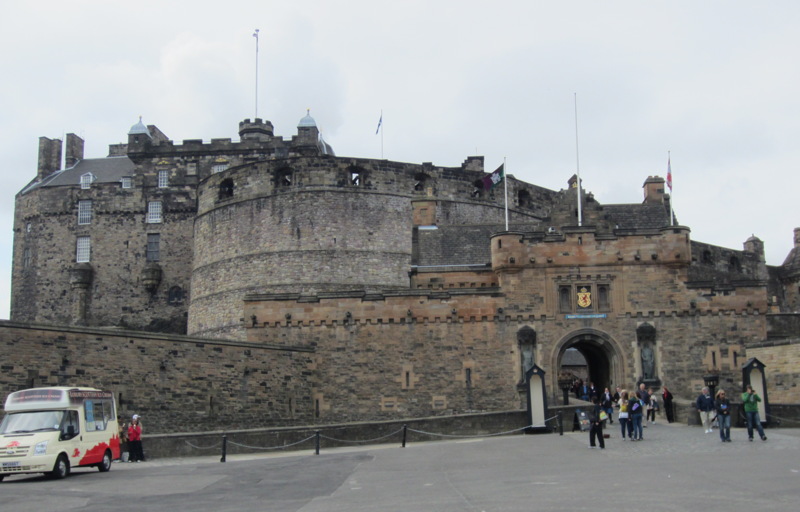
|
|
The Half Moon Battery, which remains a prominent feature on the east side of the castle, was built as part of the reconstruction works supervised by the Regent Morton, and was erected between 1573 and 1588. The Forewall to the north was built between 1689 and 1695 to link the Half Moon to the Portcullis Tower, although part of the original wall of 1540 was incorporated into it. The Half Moon Battery was built around and over the ruins of David's Tower, two storeys of which survive beneath, with windows facing out onto the interior wall of the battery. David's Tower was built on an L-plan, the main block being 51 by 38 ft, with a wing measuring 21 by 18 ft to the west. The entrance was via a pointed-arched doorway in the inner angle, although in the 16th century this was filled in to make the tower a solid rectangle. Prior to the Lang Siege, the tower was recorded as being 59 ft high, and the remaining portions stand up to 49 ft from the rock. Photo 1123 |
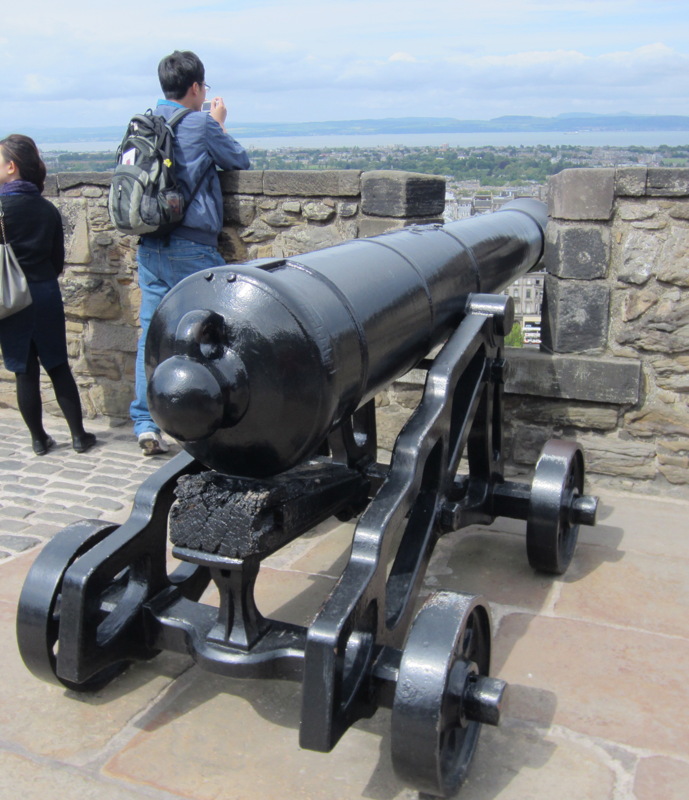
|
|
The Half Moon Battery
Photo 1127 |
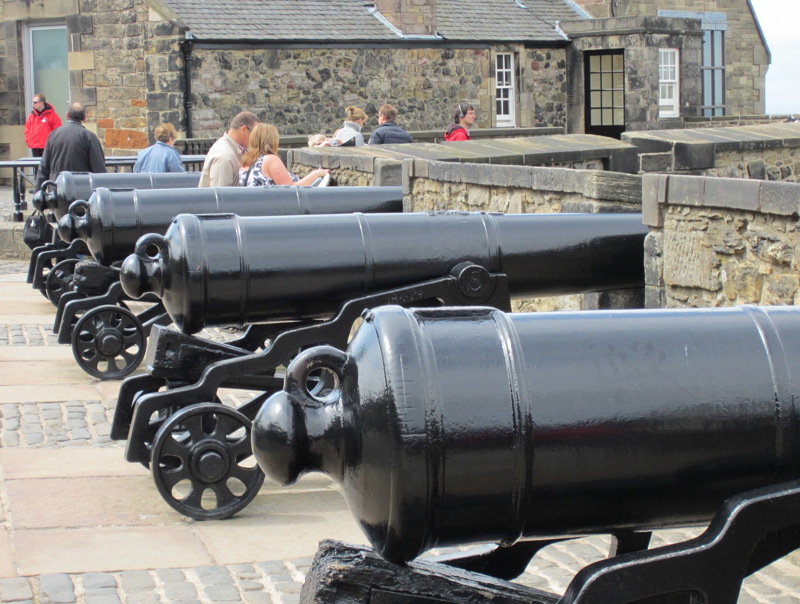
|
|
One O'clock Gun is a time signal, and is fired every day at precisely 13:00, excepting Sunday, Good Friday and Christmas Day. The gun was established in 1861 as a time signal for ships in the Firth of Forth, and complemented the time ball, which was installed on the Nelson Monument in 1852, but which was useless during foggy weather. The gun could easily be heard by ships in Leith Harbour, 2 miles away. Because sound travels relatively slowly (770 mph), maps were produced in the 1860s to show the actual time when the sound of the gun was heard at various locations in Edinburgh. The original gun was an 18-pound muzzle-loading cannon, which needed four men to load, and was fired from the Half Moon Battery. This was replaced in 1913 by a 32-pound breech-loader, and in May 1952 by a 25-pound Howitzer. The present One O'Clock Gun is an L118 Light Gun, brought into service on 30 November 2001. Photo 1135 |
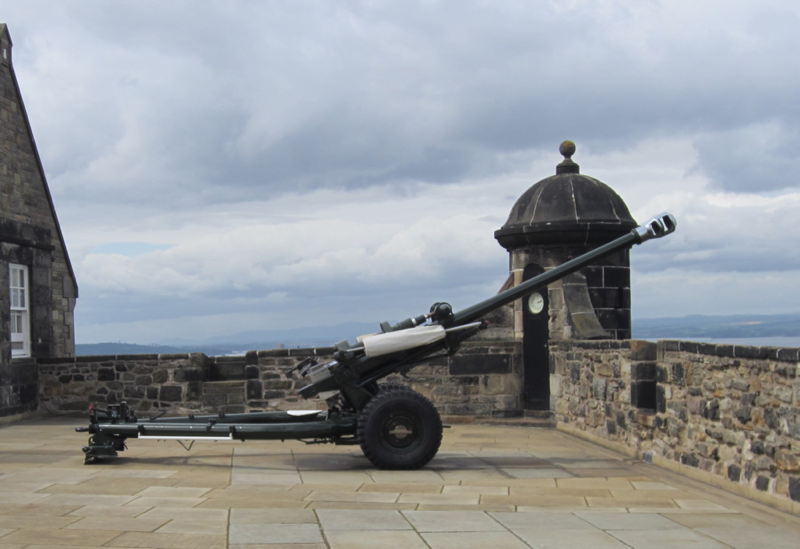
|
|
Top part of Castle
Photo 1139 |

|
|
Part of Castle
Photo 1140 |
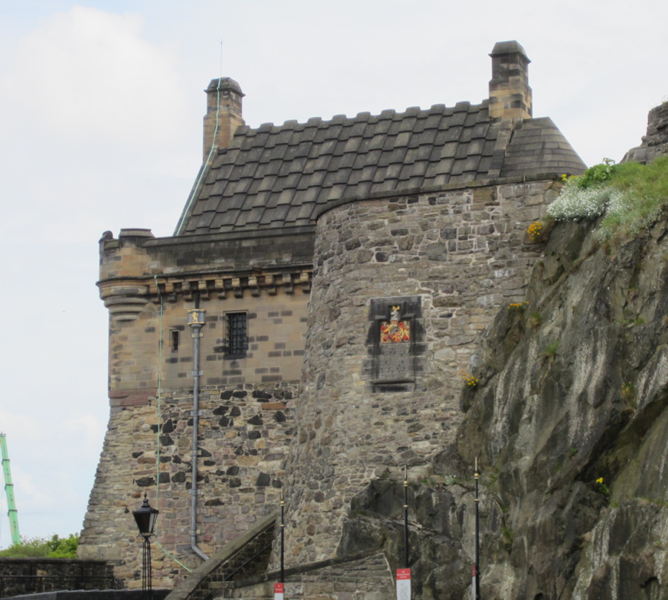
|
|
Governor's House 1742. Built as the official residence of the Castle Governor with houses in the wings for the Master Gunner and the Storekeeper
Photo 1142 |
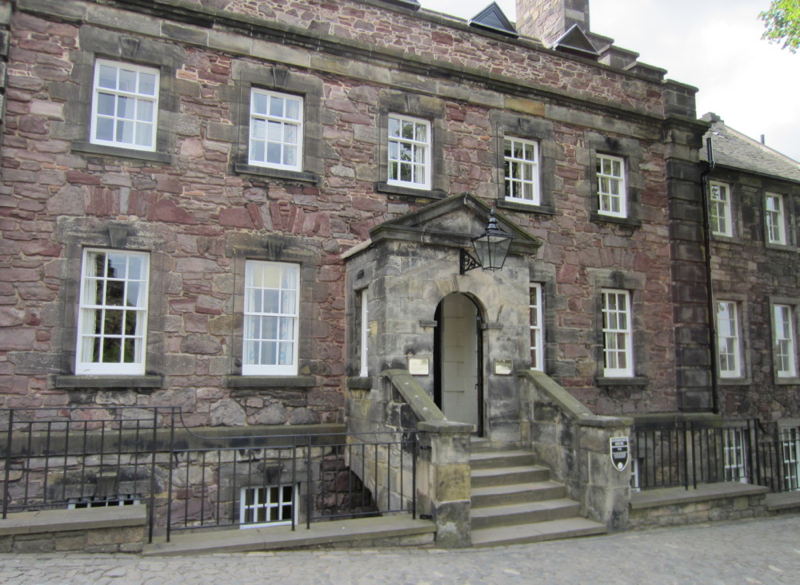
|
|
Foog's Gate The Upper Ward occupies the highest part of the Castle Rock, and is entered from the Middle Ward via the late 17th-century Foog's Gate. The origin of this name is unknown, although it was formerly known as the Foggy Gate, which may relate to the dense sea-fog, known as haar, which commonly affects Edinburgh. Photo 1144 |
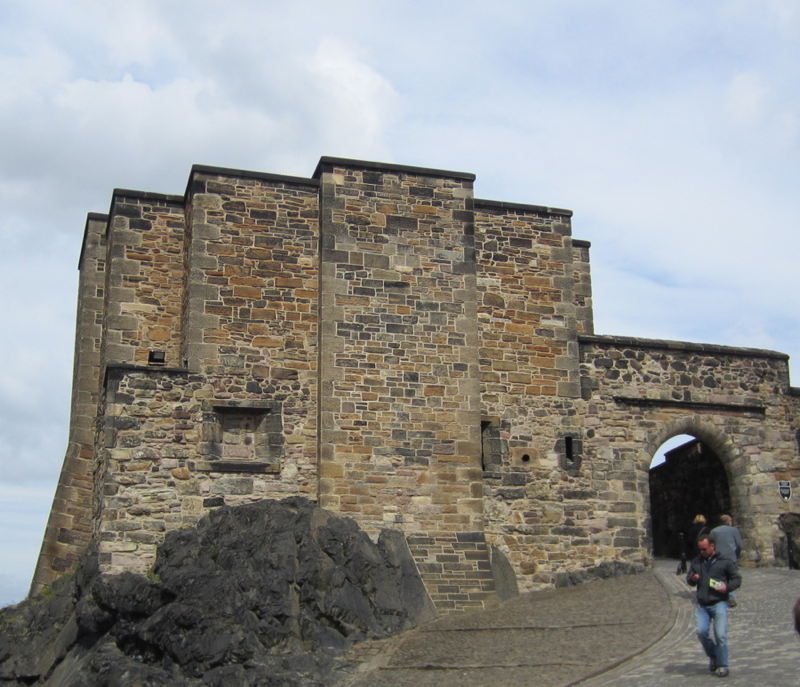
|
|
Part of castle
Photo 1151 |
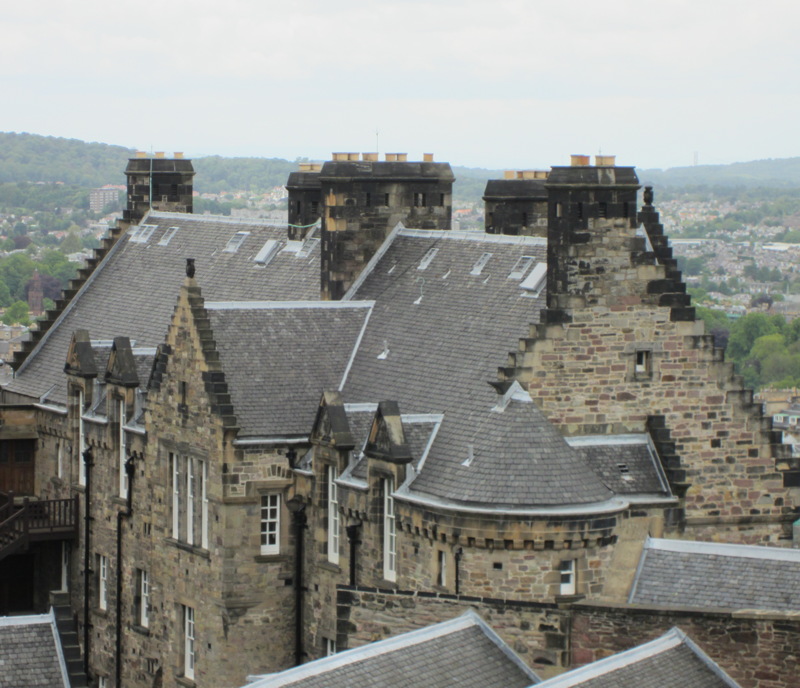
|
|
Mons Meg The 15th-century siege cannon known as Mons Meg is on display outside St. Margaret's Chapel. Mons Meg was constructed in Flanders on the orders of Philip III, Duke of Burgundy in 1449, and was given by him to his niece's husband, King James II in 1457. The 6-tonne (bombard is displayed alongside some of its 330 lb gun stones. On 3 July 1558, Mons Meg was fired in salute to the marriage of Mary, Queen of Scots, to the French dauphin François II. Workmen were paid to find and retrieve the shot from Wardie Mure, near the River Forth, some 2 miles distant. Mons Meg has been defunct since her barrel burst on 30 October 1681 when firing a salute for the arrival of the Duke of Albany, the future King James VII and II. Photo 1152 |

|
|
Cannon of the Forewall Battery, 1544
Photo 1158 |
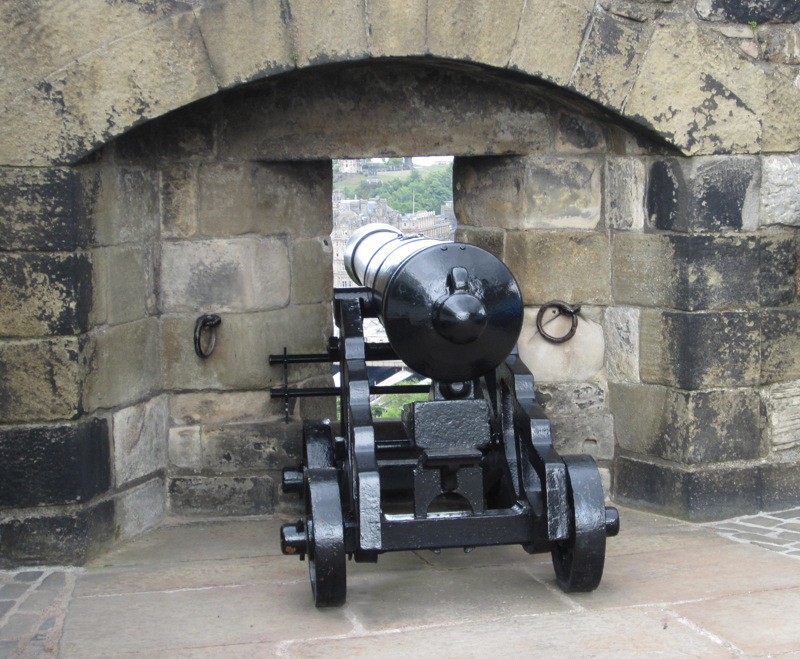
|